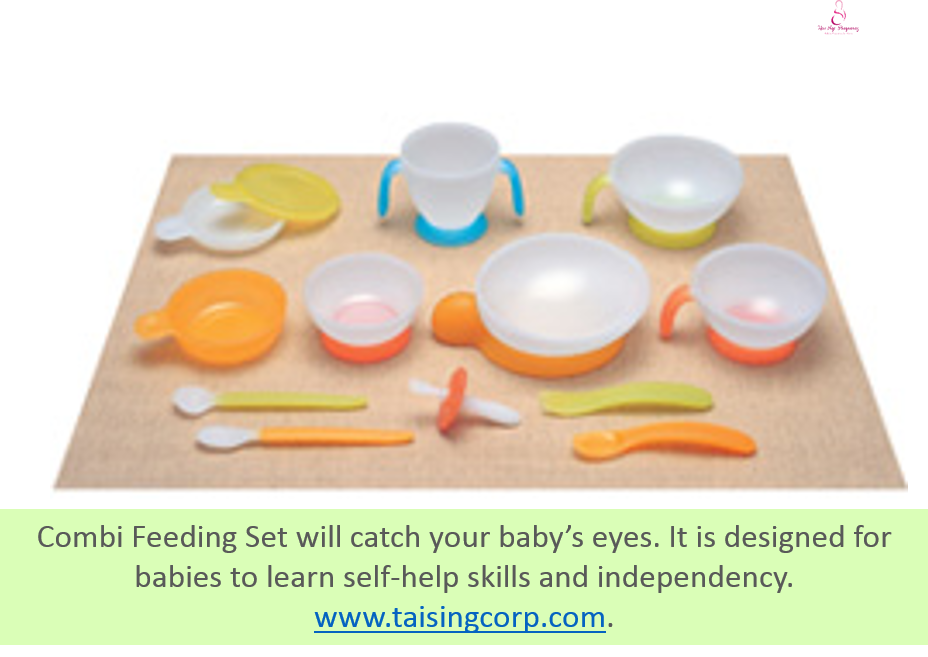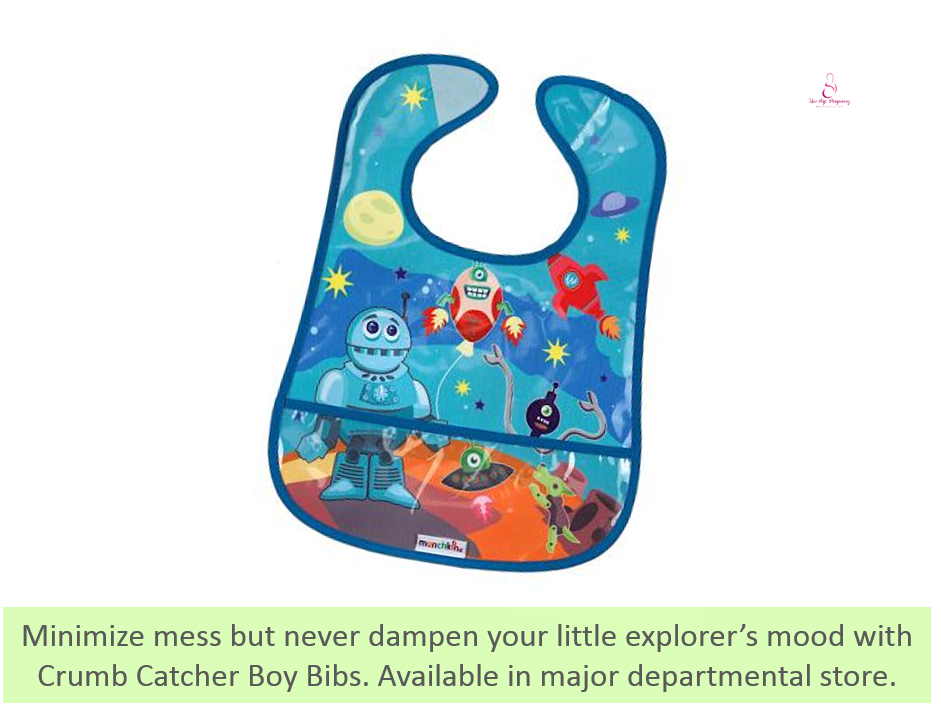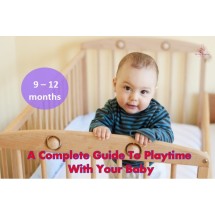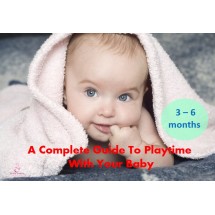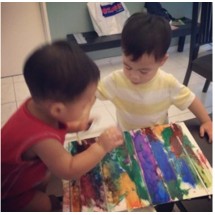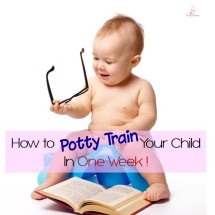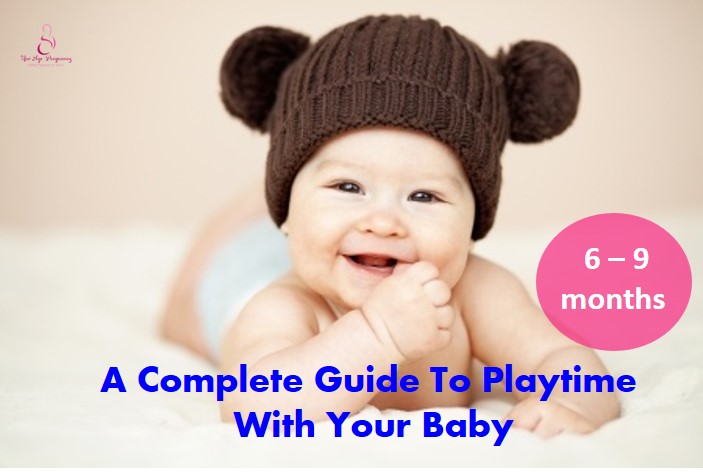
How time flies and your bub has now developed some nifty skills that are bound to put surprises and smiles on your faces! At this stage, he should be able to sit well unsupported and may even attempt to launch forward into a crawl, or even shuffle his bottom to move around. Caregivers are only going to get busier from here.
Now that he can sit and reach out for his toys, there’s no stopping him. He enjoys observing his environment (you, included!) and is learning through watching.
Fun activities: He loves exploring toys and objects that excite him – continue to bring on those that have music, sounds, or can flap up or down upon pressing a button. Your bubba may not know how to hit that button just yet, but in time to come, he will show you he can. Repetition and conditioning helps to drill and store data in their brains until one day, baby unexpectedly shows what he has learned. He is on the route to discovering that actions bring results, and that translates to cause-and-effect.
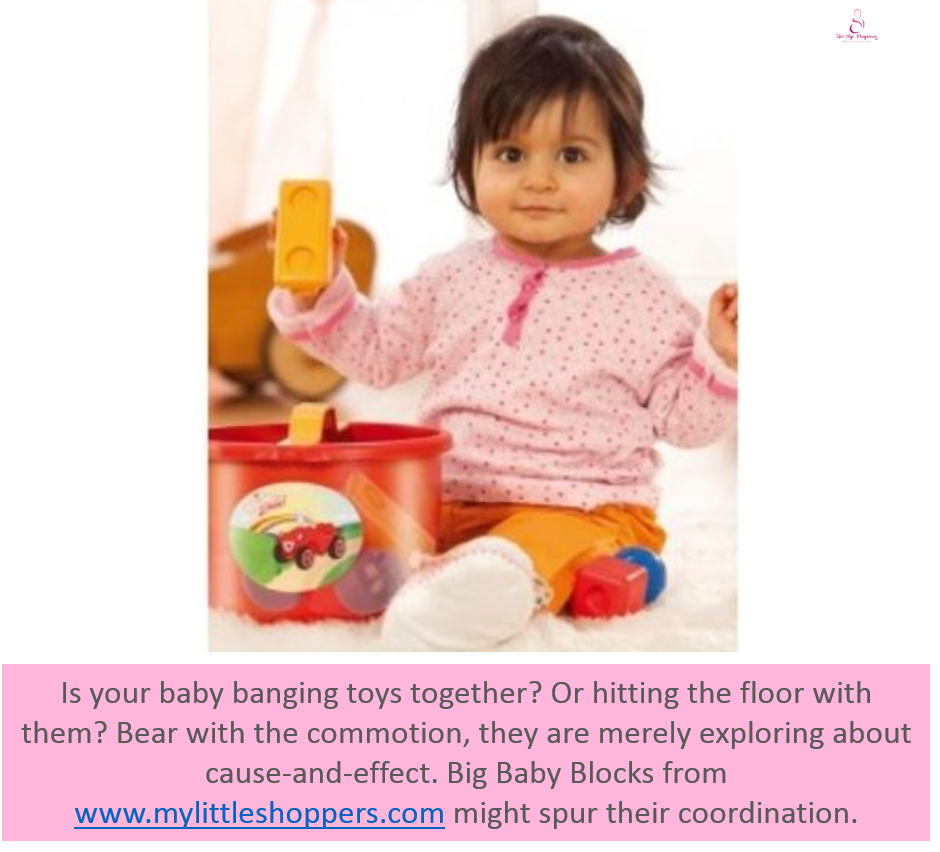
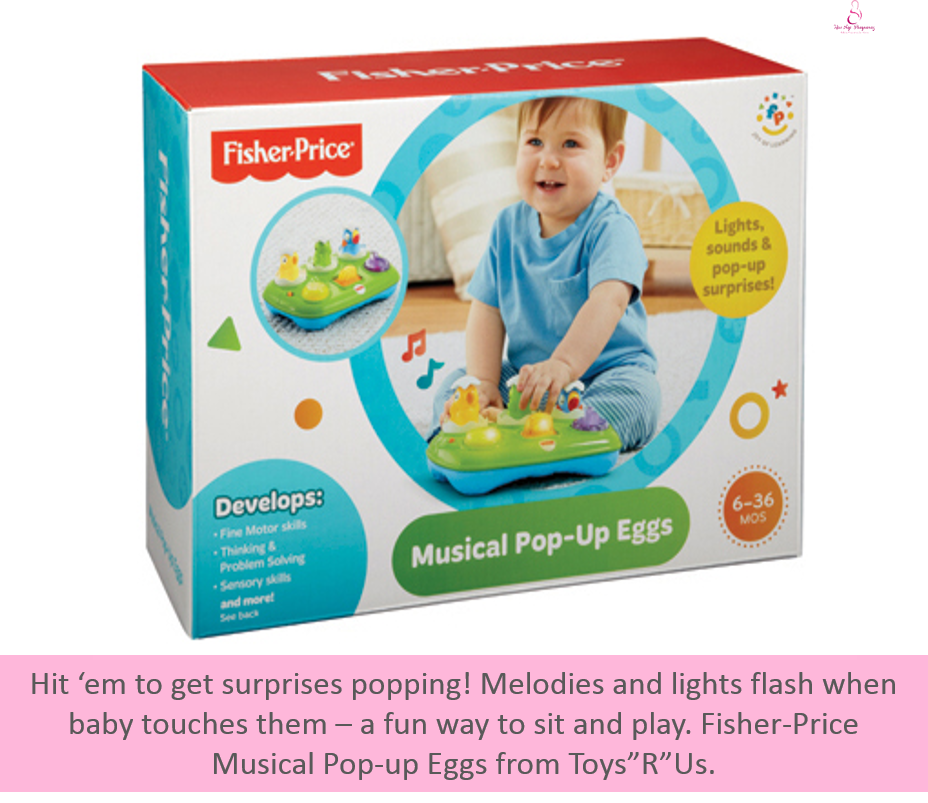 Noticed that your bub watches you as you go about your day? Why not get him involved as well, so he gets to have a go at things mummy or daddy touches – but make sure they are baby-safe too before handing to your little one.
Noticed that your bub watches you as you go about your day? Why not get him involved as well, so he gets to have a go at things mummy or daddy touches – but make sure they are baby-safe too before handing to your little one.
Fun activities: Items at home can be fun playthings for your curious learner too; you just need to practice some creativity. A box of sweet acts as a shaker. Pails and containers turn into drums. A magazine can keep baby visually-entertained with its colourful pages or baby can practice turning the pages with his little fingers, working that pincer grab and fine motor skills. Mirrors or CDs act as mirrors and babies love seeing their own reflection – it’s all part of self-discovery!
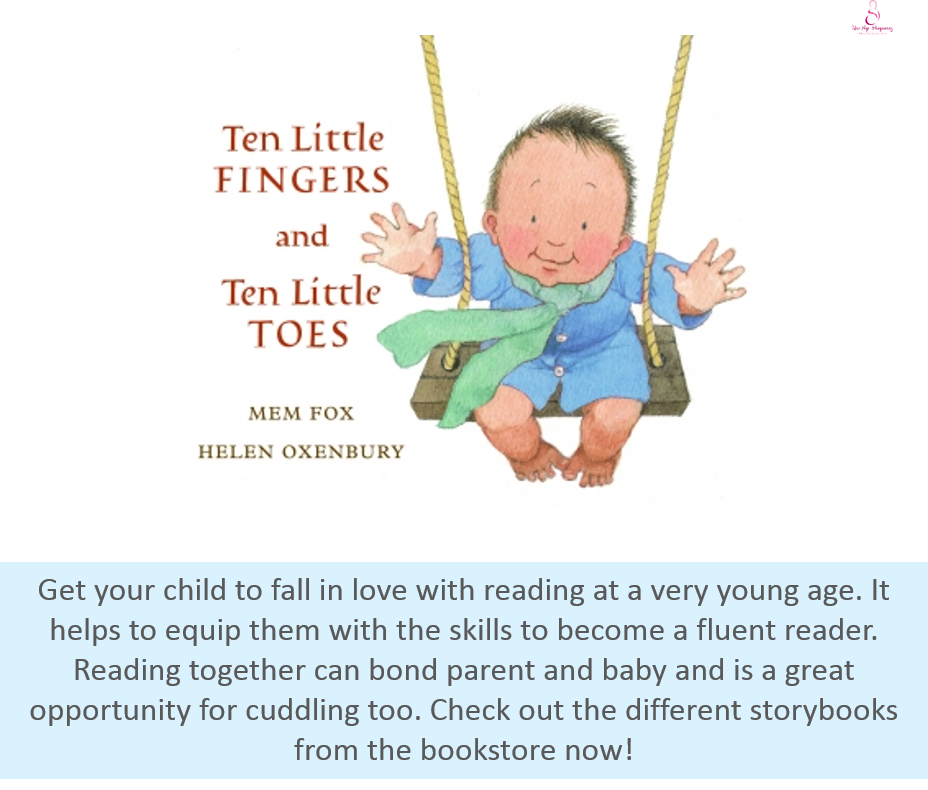
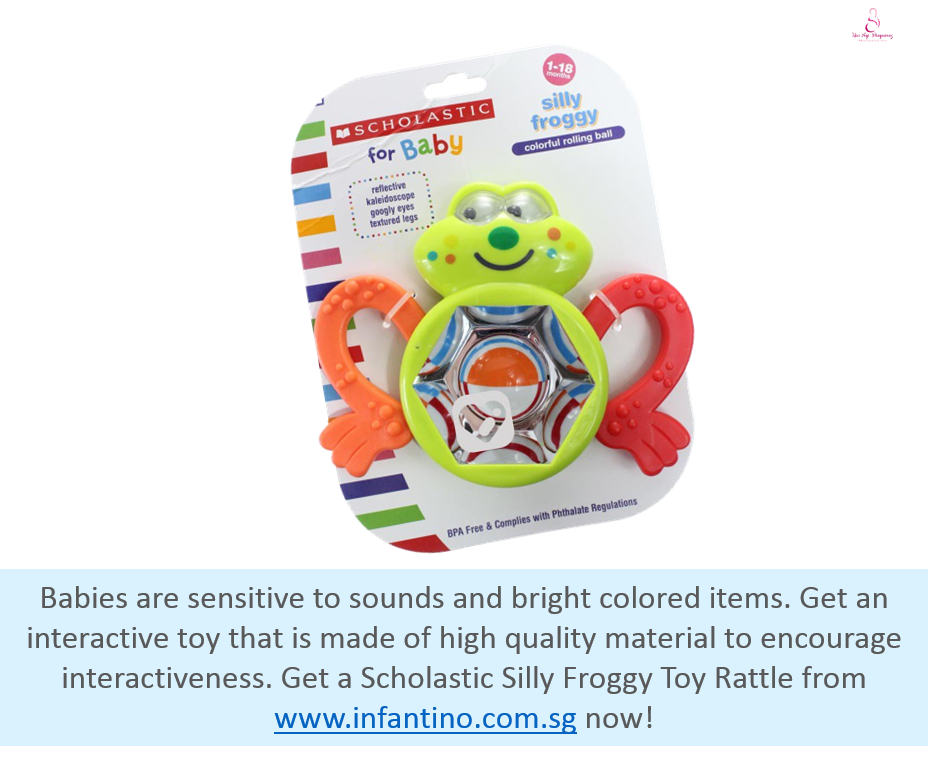 Since your little one is about to move onto crawling, floor time helps encourage familiarity and exploration on the ground. Time to move that little body!
Since your little one is about to move onto crawling, floor time helps encourage familiarity and exploration on the ground. Time to move that little body!
Fun activities: Cushioned floor mats/play mats are must-haves! They make play area more protected so baby can move about without slipping. If he does roll over, you know he’s not landing on the hard floor too. Encourage your crawler-to-be to reach out for his toys, so he gets his butt, legs and arms moving with his bodily coordination to get them. Let him learn to “work” for it, and upon reaching the toy, send him happy smiles with words of encouragements like “You did it!” and “Well done!” so baby connects with these positive praises as part of communication development.
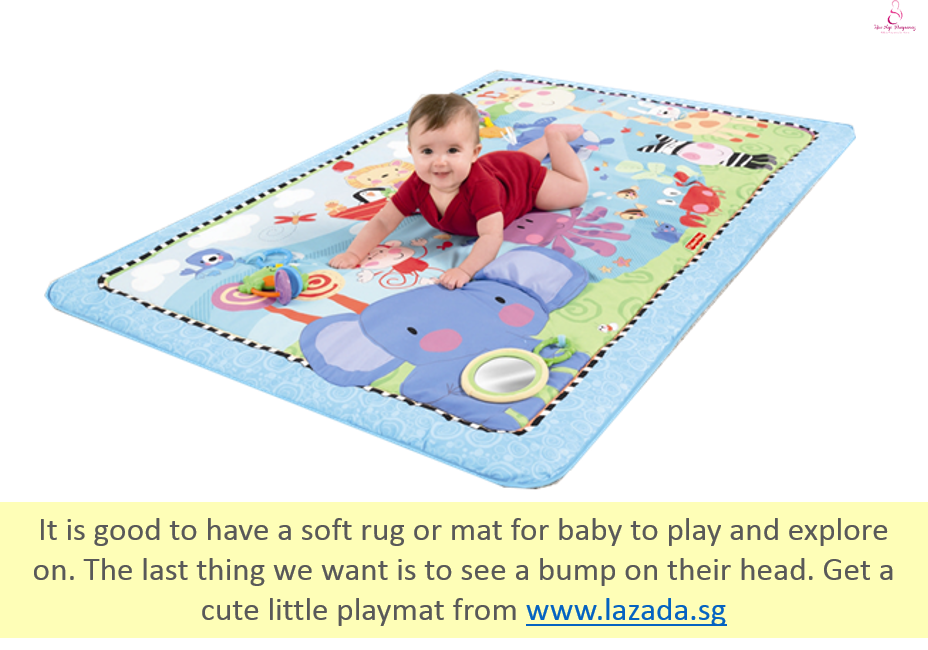
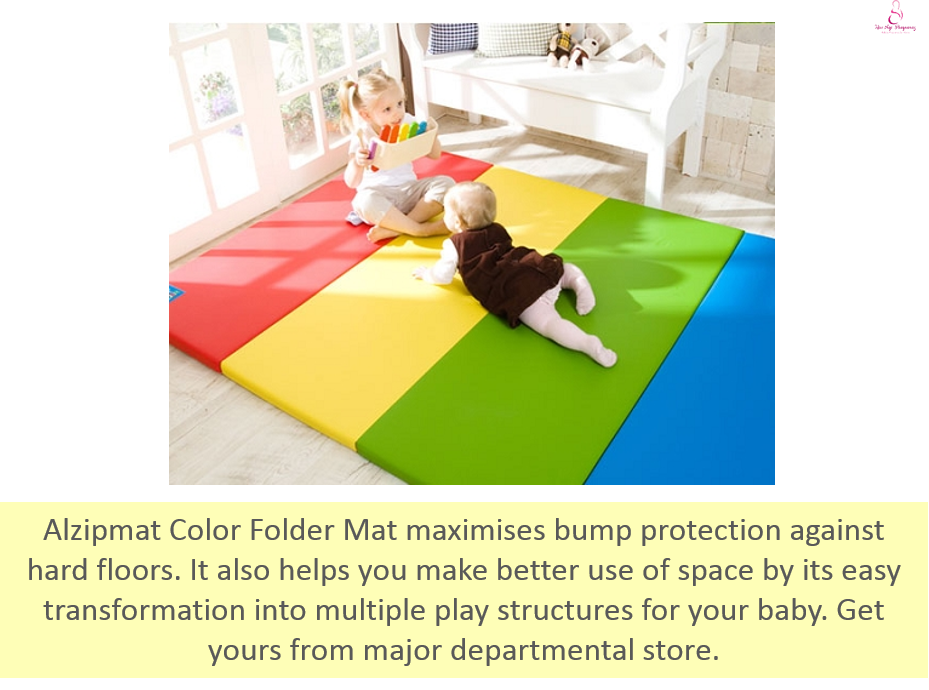 If your baby has started on solids, are you spoon-feeding him or practicing baby-led weaning? Both options are perfectly fine, and it depends on how comfortable you (and the caregiver) are, and how ready baby is. With some practice, before long, baby can feed on his own when the family is having their meals.
If your baby has started on solids, are you spoon-feeding him or practicing baby-led weaning? Both options are perfectly fine, and it depends on how comfortable you (and the caregiver) are, and how ready baby is. With some practice, before long, baby can feed on his own when the family is having their meals.
Fun activities: During mealtimes or in between meals, offering a baby biscuits or snack that baby can hold and self-feed helps strengthen his cognitive development when it comes to feeding. Baby can grab and move his hand (action) and the food towards his mouth to eat (result). This should only be done if you’re fully comfortable, and baby is able to sit upright unsupported, neck muscles are firm enough and he has started on solids. Adult supervision must be practiced. Baby might not get it right the initial times but consistent practice gets him closer to achieving his goal (food in his mouth!).
Now that your little active munchkin is starting to get on the move and learning to be independent, do ensure that the area is child-friendly with dangerous objects kept away. Even small items like marbles or stationery like scissors can pose a threat. Adults, time to build up your stamina and get ready to chase after your cutie pie!
Read more:
A Complete Guide To Playtime With Your Baby: 0 – 3 months
A Complete Guide To Playtime With Your Baby: 3 – 6 months
A Complete Guide To Playtime With Your Baby: 6 – 9 months
A Complete Guide To Playtime With Your Baby: 9 – 12 months
A Complete Guide To Playtime With Your Baby: 12 – 15 months
By Cindy Gan | Edited by Crystal Tan

